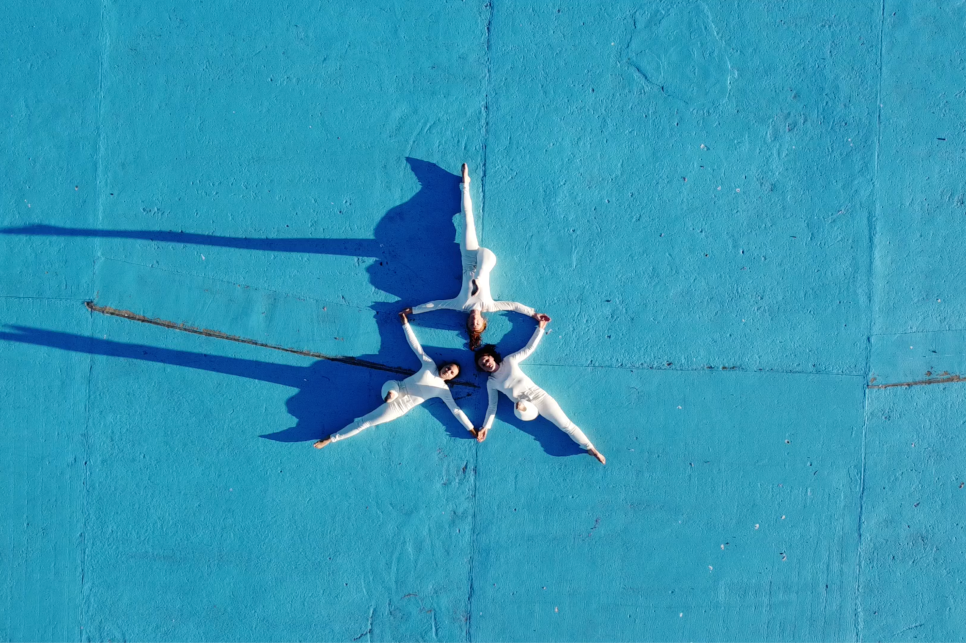Kathryn Ashill, Angela Davies, Kirsti Davies, Dylan Huw, Durre Shahwar, Rhys Slade-Jones, Fern Thomas, Heledd Wyn
Glynn Vivian is excited to present gludafael / holdfast, a group exhibition in which a collective of eight artists navigate art’s capacity to respond to the climate emergency.
Glynn Vivian at Night Thursday 23 November 2023, 5.30pm – 8:00pm
Bringing together new research and work by artists Kathryn Ashill, Angela Davies, Kirsti Davies, Dylan Huw, Durre Shahwar, Rhys Slade-Jones, Fern Thomas and Heledd Wyn, the exhibition speaks to the experiences of individuals and communities, and the inequities and absurdities of the systems that organise us and the world.
Kathryn Ashill responds to the call of the ‘rag & bone man’, which today we hear over the tannoy asking for ‘any old iron’ and in the middle ages called out for rags and for bones. The trade’s history is a precursor to modern-day recycling and Kath replies to their call for our scrap with questions of her own – about class, blame and whose voice is heard in the chorus of people working in climate justice – with a new folk song.
Drawing on future plans for a 19-mile tidal lagoon in North Wales, Angela Davies considers the history of lido pools in Wales and how, as many were built by the miner’s welfare fund, they hold an interwoven history with extraction and energy production. In Aequus, aerial scenes of dancers performing in an empty lido pool at Craig y Don, Llandudno are echoed by dancers performing in the Irish sea. The film arose out of a desire to explore the complex entanglements, which coexist as we find ways to synchronise our movements towards reimagining the future beyond our horizon.
Kirsti Davies is motivated by the following question: How do we find the language to reclaim the narrative of the climate crisis, when environmental institutions are not working? The thread of hope she follows is seaweed. Building on expansive community dialogues in Machynlleth, where Kirsti worked with local residents and businesses to bring seaweeds back into daily use, the exhibition presents her evolving resource, Gwymona, inviting visitors to explore the many possibilities seaweeds offer us.
Drawing on long-term research, Dylan Huw develops new writing presented as a pair of sound works, produced with artist Freya Dooley. Speculating upon ways of narrating the overwhelming nature of life and labour in times conditioned by ecological collapse
The two pieces foreground thinking that is restless, queer, networked, tired, turned over and recirculated. It has emerged from fever dreams and the earliest surviving photograph of a bonfire (taken near Swansea in 1853) to scroll through the ubiquity of images of fire and destruction in everyday visual culture.
Durre Shahwar draws on the familial object of a water pot to consider the displaced experience of the climate catastrophe for communities in Pakistan. This clay vessel has been used throughout generations, as it is today, by women walking through flood waters caused by earthquakes to carry life-sustaining, fresh water. Durre amplifies the disturbance of this water, asking us to think about these changing rhythms and what we are collecting as the world shifts.
Treherbert’s Old Age Hall is brought into the gallery in miniature size by Rhys Slade-Jones, stitched together from the velvet curtains of the hall’s stage. For its tent-like scale, Rhys draws on dimensions from their mother and from themselves, raising questions about the things we inherit and those we leave behind, on a multigenerational planetary scale. In creating this model, of a uniquely special community space, the artist asks what structures we need for the future and what old age we’d like to have when we get there.
Working with the image of Aquarius, the ‘water bearer’, as constellation and astrological sign, Fern Thomas considers the need for new guiding images as we bear witness to climate collapse. Steeped in myths of great floods, but also a symbol of new beginnings, community and grassroots action, Fern offers this ancient constellation as a tool for re-storying these mythic times. As Sufi teacher Emmanuel Vaughan Lee suggests, ‘the shifts that are unfolding are so monumental—they are mythic […]We cannot understand them unless we use the language of myth.’
Heledd Wyn’s installation emerges from her research into the history of hemp production in Wales and the ways hemp, as a multipurpose crop that is used to make biomaterials which can in turn be biodegradable and compostable, feed into a soil-to-soil circular system. The installation holds a planet, called NON, and Heledd proposes that in amongst the fear and anxiety of the climate emergency, one thing we can all do for the planet is slow down, consume less and do less. How there is power in non-action to find balance.
The artists in gludafael / holdfast were brought together through the 2022 Future Wales Fellowship, an opportunity developed by Natural Resources Wales and the Arts Council of Wales as part of the Creative Nature Programme, supporting artists to research the impact climate change has on everyday life. This exhibition has been commissioned by Natural Resources Wales, supported by the Arts Council of Wales and Glynn Vivian, and developed with curator Louise Hobson.
There will be a series of artist-led public programmes alongside the exhibition, including talks, events, performance and workshops, running from January – March 2024. Visit www.glynnvivian.co.uk for more information about the program.

